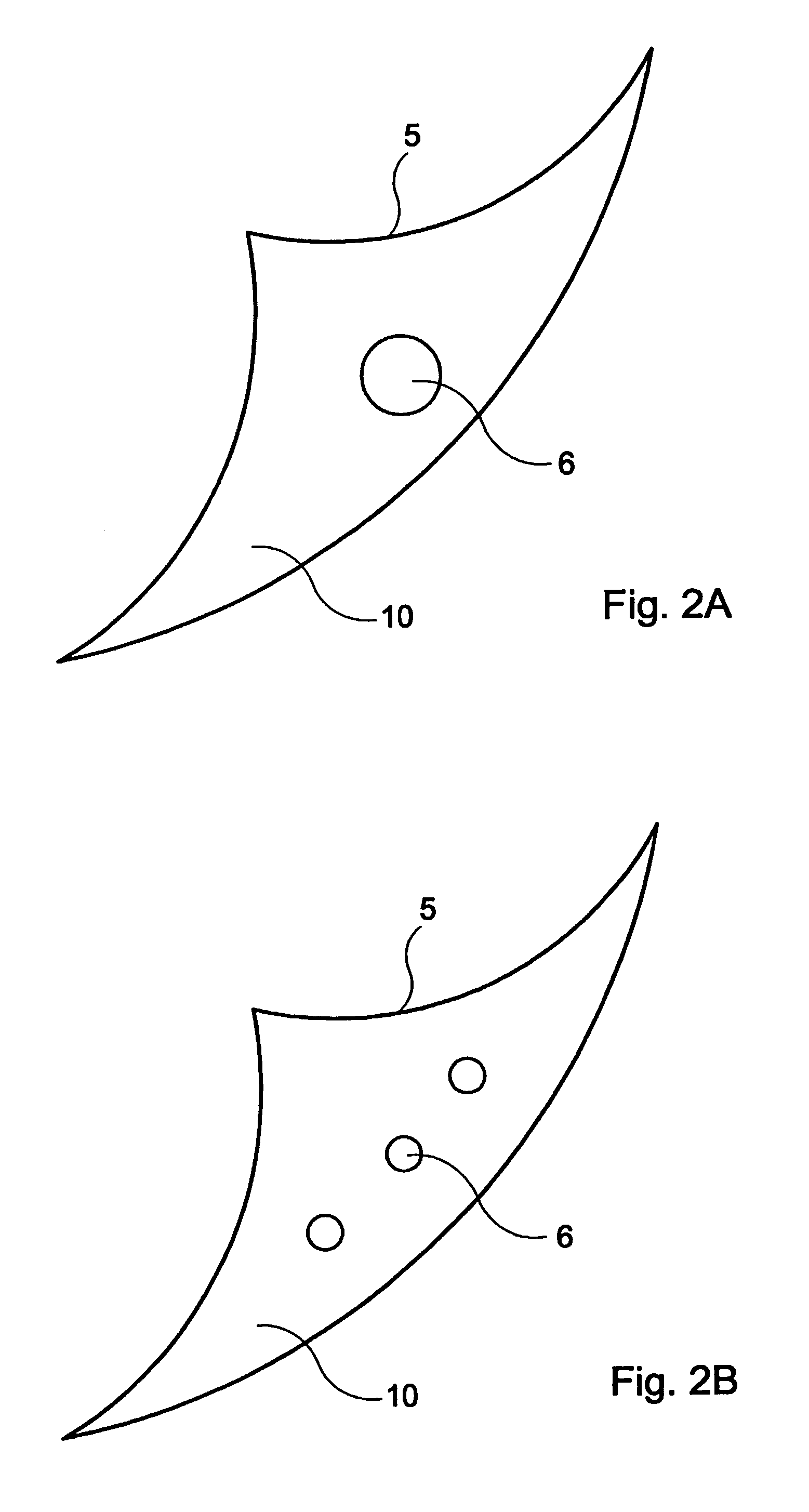Cable with shielding strip
a shielding strip and cable technology, applied in the direction of insulated conductors, power cables, cables, etc., can solve the problems of increasing pressure, affecting the service life of the cable, so as to reduce the effect of increasing pressure and reducing pressur
- Summary
- Abstract
- Description
- Claims
- Application Information
AI Technical Summary
Benefits of technology
Problems solved by technology
Method used
Image
Examples
Embodiment Construction
[0024]In FIG. 1 is shown by radial cross-sections an insulated electrical cable designed according to the invention. The cable consists of three insulated conductors 1, where an inner conducting layer 2, insulation 3 and an outer conducting layer 4 are arranged around each conductor. Several sectorial shield strips 5 with one or several longitudinal shield wires 6 baked into them are present in the space between the outer conducting layer and an outer foil 11 of metal such as aluminium, which strips are arranged to function as a metallic shield. These aluminium wires lie preferably baked into a filler material that protects against corrosion 10, known as shield wire filler material 10, which may be fully or partially conductive and may demonstrate swelling properties when in contact with water, whereby the tape or tapes preferably follow the cabling of the parts. Further, outside of the shield strips and in contact with them, a tape has been arranged that may consist of an aluminium...
PUM
| Property | Measurement | Unit |
|---|---|---|
| voltages | aaaaa | aaaaa |
| humidity | aaaaa | aaaaa |
| voltages | aaaaa | aaaaa |
Abstract
Description
Claims
Application Information
 Login to View More
Login to View More - R&D
- Intellectual Property
- Life Sciences
- Materials
- Tech Scout
- Unparalleled Data Quality
- Higher Quality Content
- 60% Fewer Hallucinations
Browse by: Latest US Patents, China's latest patents, Technical Efficacy Thesaurus, Application Domain, Technology Topic, Popular Technical Reports.
© 2025 PatSnap. All rights reserved.Legal|Privacy policy|Modern Slavery Act Transparency Statement|Sitemap|About US| Contact US: help@patsnap.com



